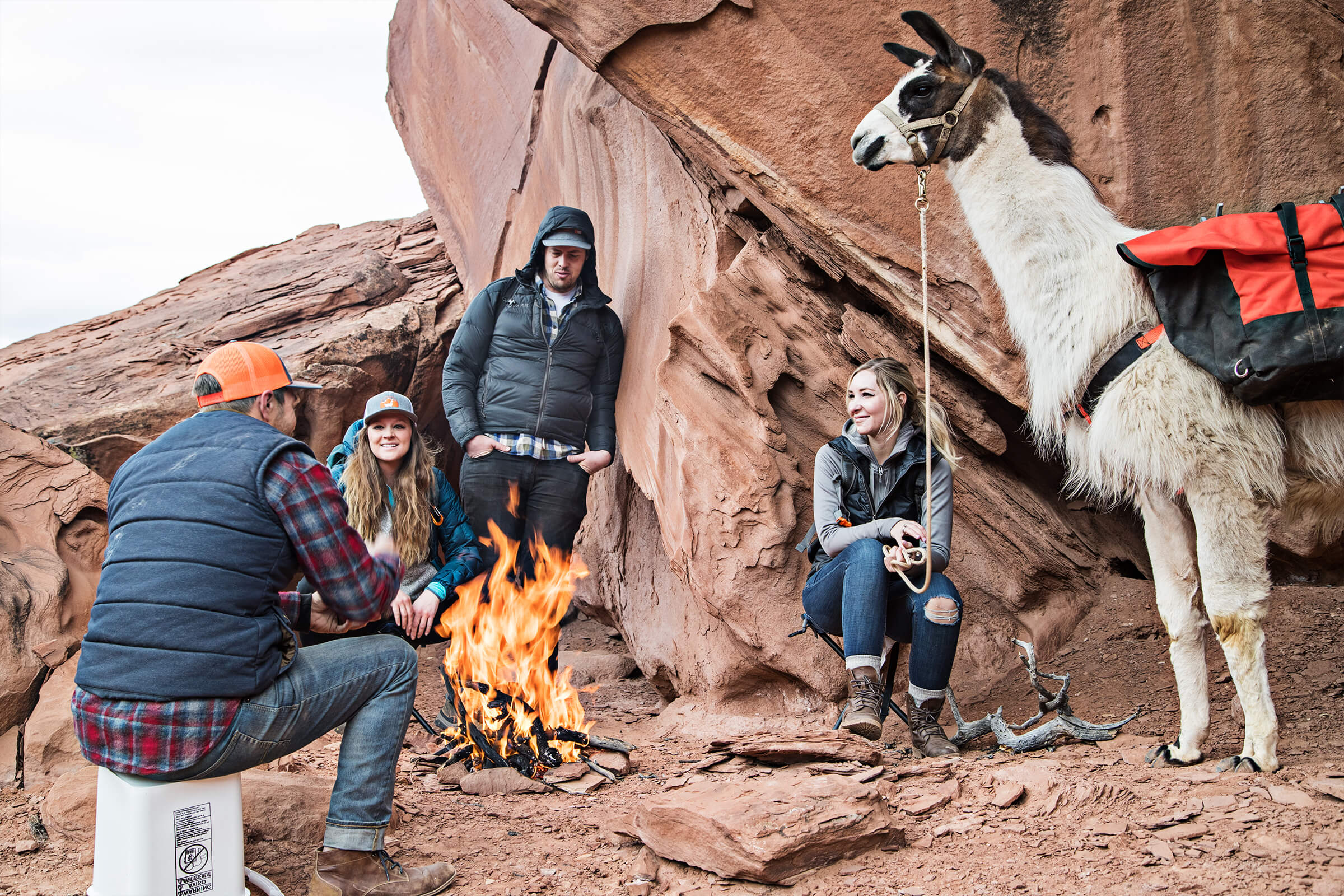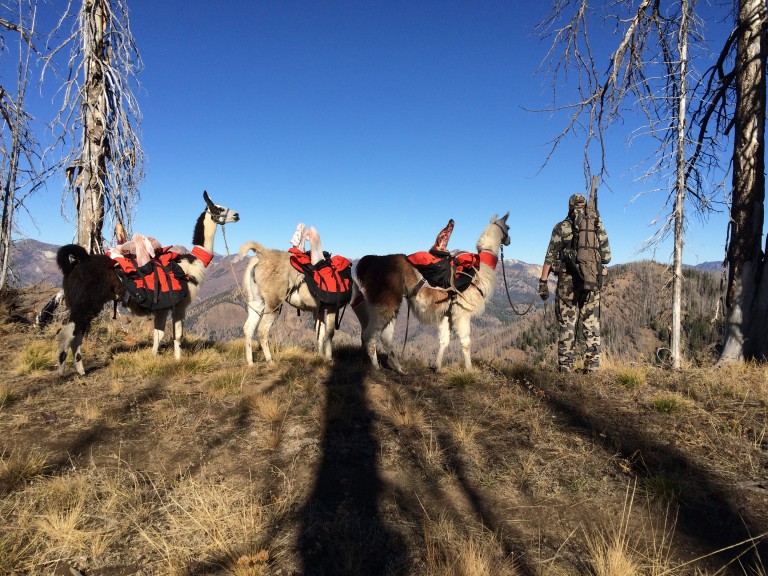
FAQs
What kind of gear is needed to pack with llamas?
Each llama needs a saddle, blanket, halter, two panniers, lead rope and a stake out lead. Also, you will need a brush for brushing them out, a scale for measuring the panniers (panniers are the bags that go on each side of the llama that hold the gear).
How much do they eat?
Our biggest llamas typically eat 6-7 pounds per day. When in the mountains we try to camp in sites that have ample green forage for them. We typically only pack in feed for the llamas during fall and winter conditions. However we do pack feed for them during the summer when high quality feed is sparse. It is important to note when you supplement llamas in the backcountry with pellets or hay they will need to drink more water to avoid urinary infection and kidney problems.
How often do they drink?
Most animals in the animal kingdom need water every day. Llamas are no different. They may choose not to drink on occasion and will not drink as much as a horse; nonetheless; llamas need fresh clean water daily. You can lead a llama to water but can’t force it to drink.
How much do they weigh? Our best packers weigh from 330 to 420 pounds.
How much can they carry?
Our trained and proven packers are typically 5 years and older and are expected to carry 20%-22% of their conditioned (in shape) body weight. As a rule of thumb our packers carry 70-80 pounds each.


How far or fast can they go?
Our commercial packers chalk up a few 12-15 mile days every season. However this is on the very extreme end, we expect our llamas to go 4-9 miles per day with a layover day every 2-3 days. We train and condition our llamas to match the pace of a conditioned hiker. They stop and rest when you stop and rest. When you eat lunch and take off your pack they eat lunch and you should take off their packs. At the end of a long day of hiking when you’re tired they are probably tired as well.
Do they have a problem with the smell of dead game such as bear, elk, wolf, and deer?
We have packed elk, deer, moose, bighorn, coyotes, wolves, bear and mountain lions on multiple trained llamas and never had them loose control. Every llama is different and not all llamas will react the same. Young llamas and beginners need to be introduced to new things slowly with patience and understanding from their handler. Once they understand what is expected of them there is little concern after that point. It is always good to be cautions and approach dead animals and new situations with caution.
How many llamas does it take to pack out a deer?
One llama can typically pack out an entire quartered out deer, head and all. For large mule deer and extremely long treks it would be advised to use 2 llamas to pack it out.
How many llamas does it take to pack out an elk?
3 llamas can pack out a quartered elk including back straps, tenderloins, neck, brisket, rib meat and the head. For very large elk 4-5 llamas are best, especially if you are going more than 7 miles in steep country. In short each elk or deer could weigh more or less than the last one you harvested so the user should not exceed weight limits for each llama and might have to plan to make multiple trips.
Do llamas do well in hot dry conditions and cold winter conditions?
Llamas regulate temperature exceptionally well for animals. They can have problems in the extreme heat and extreme cold. When facing these extremes it is best to use caution to mitigate any problems the llamas or you might have. Feel free to contact us regarding specific conditions you might be facing.
Do llamas spit?
Yes, they do but typically only at each other or when in danger. I have never been spit on from any of our trained packers, but have been spit on by a protective mama llama guarding its new born baby.
Do you have to put shoes on llamas like horses?
Llamas do not wear shoes like a horse; they have a split toe similar to the split hoof of bighorn sheep or mountain goats and have a soft pad much like a dog or camel. This gives them superior stability and traction in steep, rocky, cliffy, loose or hard terrain.
How do they do in grizzly and wolf country?
Llamas are very alert and attentive and typically know when something is wrong. If they see or sense a wolf or grizzly they usually make a loud alarm sound with their voice that can alert you to potential danger. We have seen this first hand warn off predators. We have never had any backcountry attacks, but have had grizzlies in camp. The alarm call from the llamas saved the day. We hope we don’t have any more encounters but we are sure we will. Using caution in bear country by cooking away from your tent and using bear hangs and electric fences help lower your bear exposure dramatically in these situations. An old outfitter trick we also like to use is to bring a radio and extra batteries and leave it on when we leave camp. This has helped over the years as well.
Can you ride llamas?
For the safety of llamas and people, we don't recommend anyone ride llamas.
How much do they cost?
Our quality trained packers are usually at least 5 years old or more and have over 500-1000 light duty to medium duty miles of pack experience in the backcountry. Prices range from $2,000 to $4,000 for top end proven packers. Breeding Stock currently ranges from $2,000-$9,000.
Now operating in 6 areas:
Jackson Hole, WY
Pinedale, WY
Torrey, UT
Brigham City, UT
Idaho Falls, ID
Helena, MT
